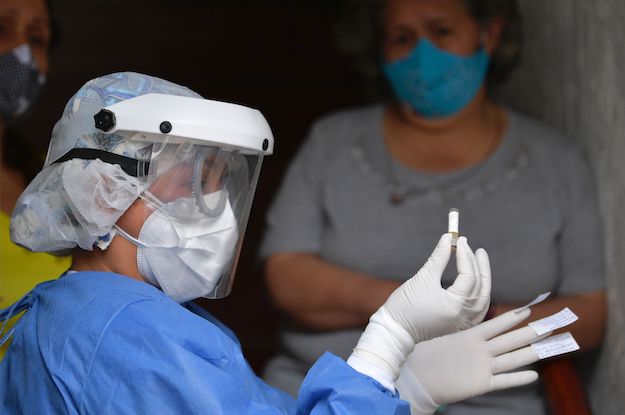BOGOTÁ – The view from Colombia as the coronavirus hobbled health systems in Italy, Spain and beyond was a frightening one. If developed economies could be brought to their knees by COVID-19, what would happen to us?
But while the outbreak has indeed had tragic consequences – more than 1,800 Colombians have lost their lives to the virus so far – we have largely avoided the saturated hospital systems and skyrocketing mortality rates seen elsewhere in the region. By cases per million residents Colombia ranks as only the 71st most affected country in the world. Deaths per million are well below much of the rest of the region.
That does not mean the work is done. Indeed, if our relative success in containing the coronavirus has taught us anything, it is that a vigilant, continuous and science-based approach to confronting the pandemic will be more vital than ever as the economy begins to reopen.
First and foremost, that means a widespread – but targeted – use of testing capacity. One of the first challenges we faced in dealing with the pandemic was increasing our ability to measure the scale of the virus’ spread. By upgrading regional laboratories, and purchasing machinery capable of extracting the genetic material needed to perform tests, we were able to increase testing from as few as 1,000 per day to 12,000-14,000 in relatively short order.
Without testing, we can’t know how the virus is behaving or where to target our efforts in trying to control it. Colombia has processed more than 450,000 PCR tests (a type of test that allows for early identification of the virus) since the pandemic began. But more are needed.
That is why, as lockdown measures are relaxed, we have worked to adapt testing, tracing and isolation guidelines (or PRASS in Spanish) for a Colombian context. If someone gets infected and returns a positive test, PRASS guidelines will have health officials immediately work to identify the people with whom the patient recently came into contact. For the 40 people on average that need to be traced, we will test those who were closest to the patient and isolate the rest.
This strategy allows economic activity to continue even if case numbers increase slightly amid reopening and more widespread testing. Instead of locking down tens of millions of people, only those 100,000 or 200,000 who are most at risk will need to be isolated.
PRASS is also far more efficient than blindly testing as many people as possible. Examining 50 million Colombians would take too long to be useful, in addition to being prohibitively expensive. Identifying at-risk groups – such as prison populations, those who have attended a large event or had contact with a person who has tested positive – is key to continuing to control the outbreak.
Of course, many other challenges remain. While Colombia’s ICU capacity (about 12 per 100,000 inhabitants) is better than many developed economies, that capacity is concentrated in major cities. An ICU isn’t just a ventilator or other machinery – it’s the whole package of technicians, doctors and equipment needed to treat a patient with urgent needs.
This presents particular difficulty in remote areas of the country with longstanding deficits in infrastructure and social services. We have sent a significant amount of equipment to places with this type of need, in order to provide at least some ICU capacity. But in many cases we can protect more lives by bringing patients from these areas to qualified hospitals with doctors and technicians in big cities. In other words, bringing people to where the capacity already is.
Inventory, too, must remain a top priority. With around 6,000 ICUs in the country – 2,650 of which are devoted exclusively to COVID-19 – we are in a relatively good position to confront immediate challenges. But we are still working to increase capacity by upgrading intermediate care units and purchasing more ventilators from abroad (around 4,700 more ventilators should arrive this summer). Local companies have also been given incentives to make ventilators domestically, which can then be released to market after extensive testing and certification.
In short, now is not the time for Colombians to let their guard down. Vaccines and treatment programs are coming, but we don’t know when. And even then, new challenges will arise. Mechanisms need to be put in place so that, when the time comes, smaller countries are able to purchase the syringes and vaccine doses they need for their citizens, without having to pay exorbitant prices to compete. Colombia has done a good job in controlling the coronavirus so far. But our work is just getting started.
—
Plata is Colombia’s Manager for Comprehensive Attention to the Covid–19 Pandemic







